Enhancing sentence skills in elementary school students is crucial for their language development and overall literacy. Engaging students in fun and interactive sentence activities can make the learning process enjoyable and effective.

From understanding sentence structure to expanding sentences with descriptive details, these activities cater to different grade levels, ensuring students grasp the fundamentals while having a great time.
Whether it’s sentence scavenger hunts, silly sentence challenges, or sentence relay races, these activities foster creativity, critical thinking, and language proficiency.
Discover a wide range of exciting sentence activities suitable for 1st to 3rd grade students, designed to make learning sentences a delightful adventure.
But! Before we get to the activities, it’s important to understand what students should know about sentences at each grade level.
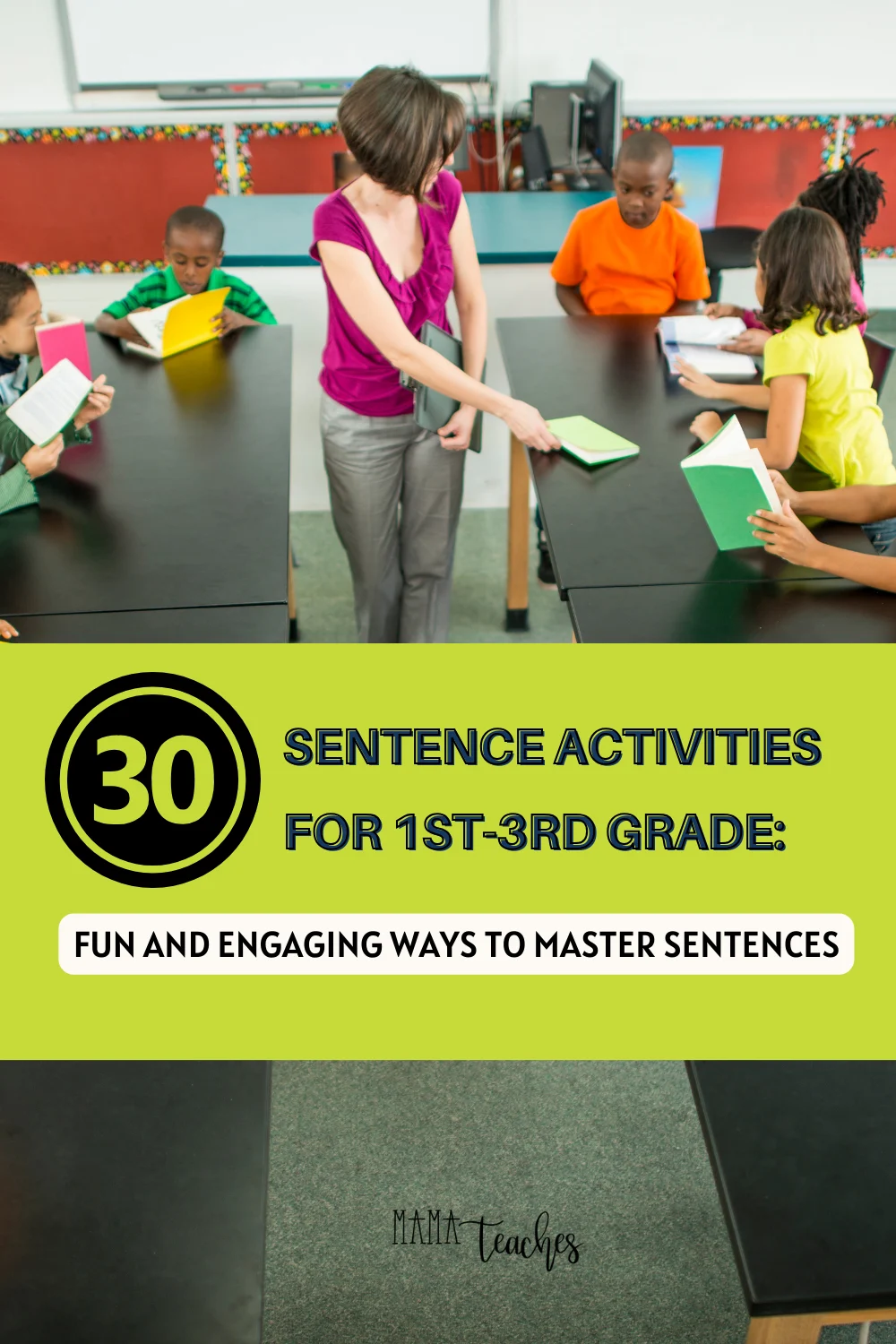
This article contains affiliate links to things that you might like.
Sentence Activities in First Grade
What Students in 1st Grade Should Know About Sentences
In first grade, students should develop foundational knowledge about sentences.
Here are some key aspects that students should know about sentences at this grade level and the possible Common Core State Standard (CCSS) that they could correlate to depending on the activities that you choose to do with your students.
- Definition of a Sentence: Students should understand that a sentence is a group of words that expresses a complete thought. (CCSS RL.1.1)
- Capitalization and Punctuation: Students should learn that sentences begin with a capital letter and end with appropriate punctuation marks such as periods, question marks, or exclamation marks. (CCSS L.1.2)
- Subject and Predicate: Students should be introduced to the basic structure of a sentence, which consists of a subject (the noun or pronoun that performs the action) and a predicate (the verb that tells what the subject is doing). (CCSS L.1.1)
- Simple Sentences: Students should learn how to form simple sentences with a subject and a predicate, such as “The cat ran.” or “She likes ice cream.”. (CCSS L.1.1)
- Word Order: Students should understand the importance of word order in creating meaningful sentences. They should learn that changing the order of words can change the meaning of a sentence. (CCSS L.1.1)
- Expanding Sentences: Students can begin to expand simple sentences by adding more details using adjectives (describing words) or prepositional phrases. (CCSS L.1.1)
- Asking and Telling Sentences: Students should be able to differentiate between asking sentences (interrogative) and telling sentences (declarative). (CCSS SL.1.6)
- Reading and Writing Sentences: Students should practice reading and writing sentences independently, using their growing knowledge of phonics and sight words. (CCSS RF.1.3)
Remember that these are general expectations for first-grade students regarding sentences.
Students progress at different rates, so it’s important to provide appropriate support and differentiation based on their abilities and needs.
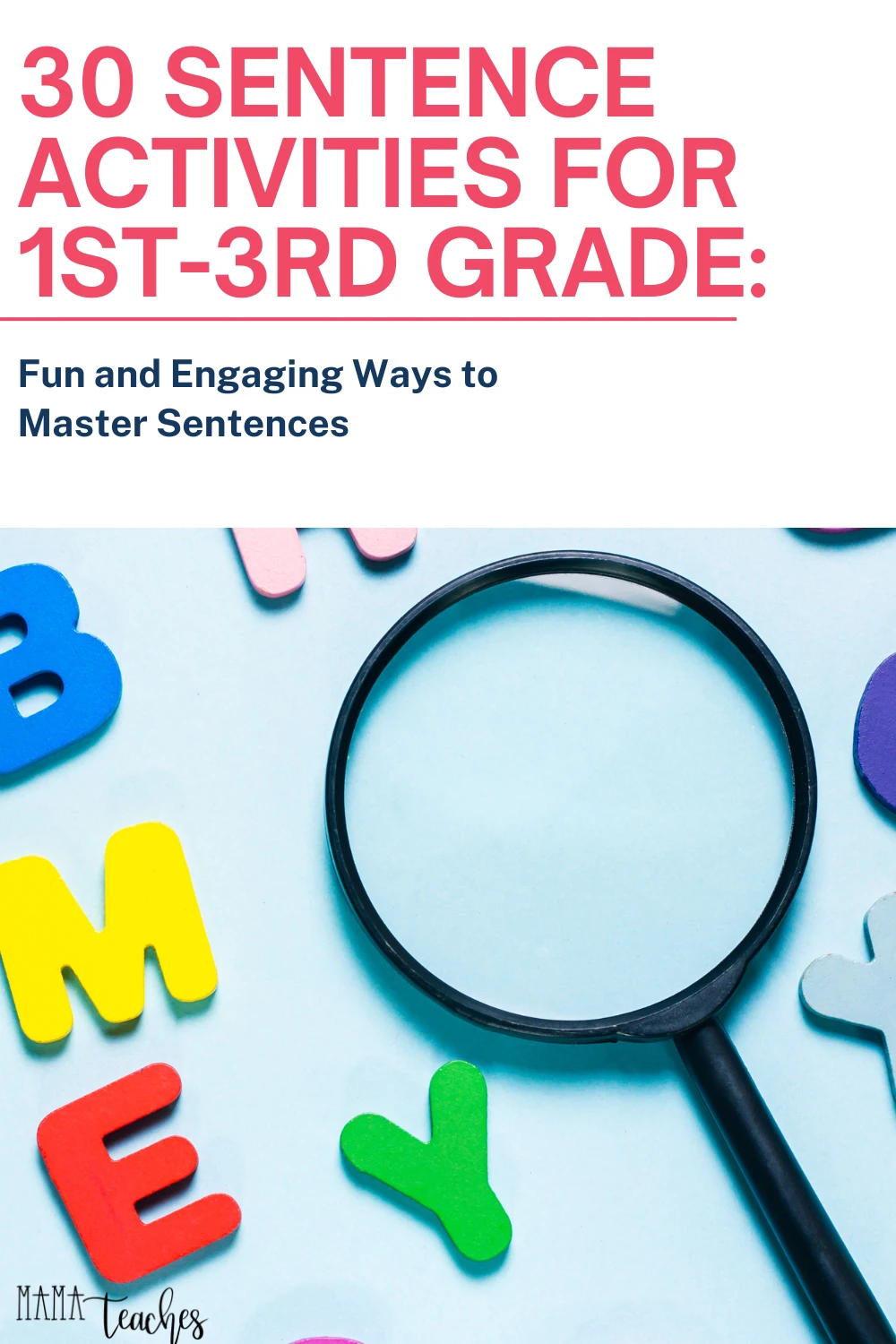
First Grade Sentence Activities
- Write a sentence using each of the sight words you’ve learned.
- Create a sentence using a given word and draw a picture to illustrate it.
- Practice writing simple sentences with subjects and predicates.
- Write sentences using different punctuation marks (periods, question marks, exclamation marks).
- Rearrange given words to form a complete sentence.
- Write descriptive sentences about objects or animals.
- Create sentences using adjectives to describe nouns.
- Write sentences using words that rhyme.
- Use sentence starters to write complete sentences (e.g., “I like…”, “My favorite…”)
- Write sentences about your daily routine or a recent event.
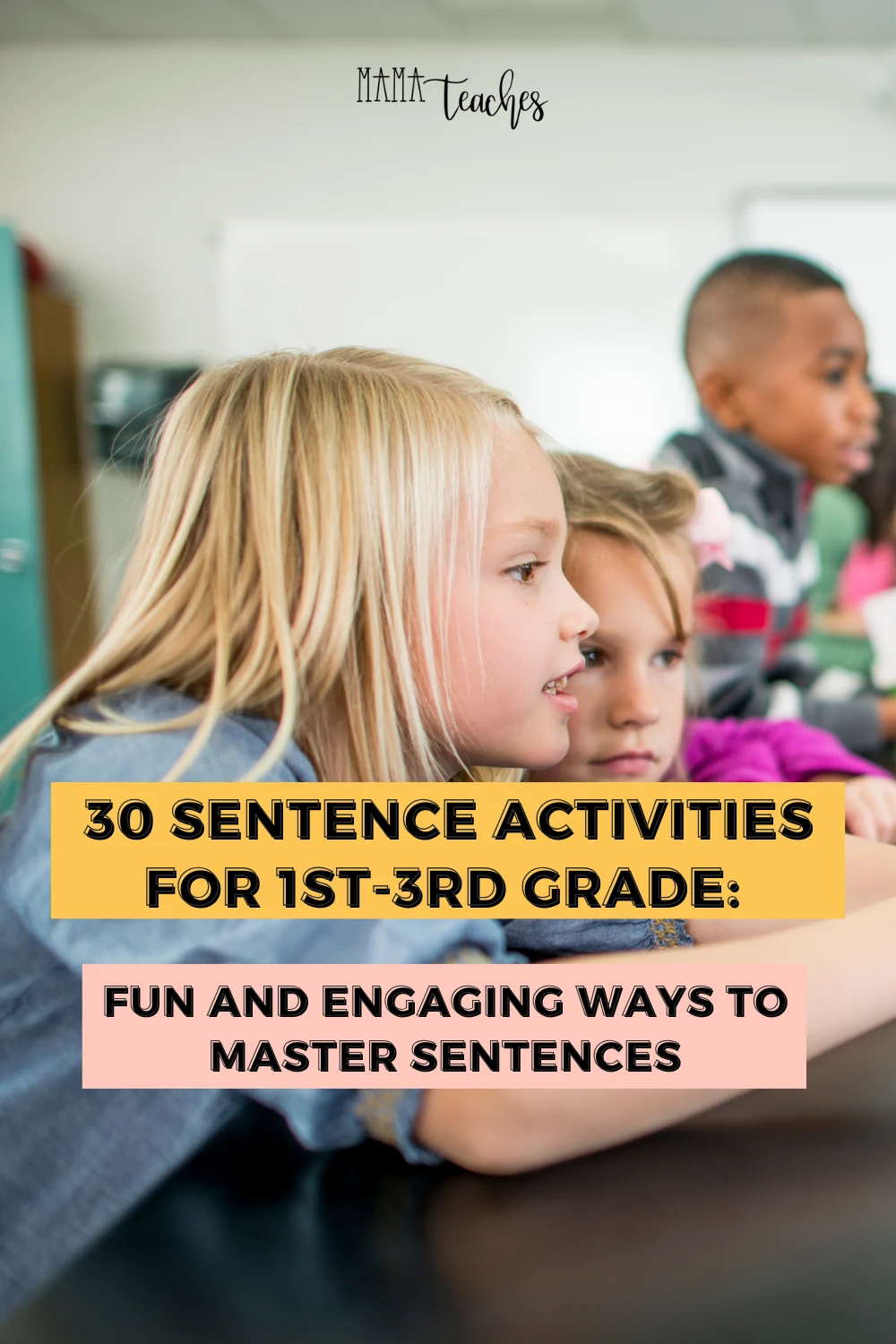
Sentence Activities in Second Grade
What Students in 2nd Grade Should Know About Sentences
In second grade, students should continue to build upon their understanding of sentences.
Here are some key aspects that students should know about sentences at this grade level and the possible Common Core State Standard (CCSS) that they could correlate to depending on the activities that you choose to do with your students.
- Sentence Structure: Students should have a solid understanding of the basic structure of a sentence, including the subject, predicate, and the use of capital letters and ending punctuation. (CCSS L.2.1.f)
- Types of Sentences: Students should be familiar with different types of sentences, including declarative (statements), interrogative (questions), imperative (commands), and exclamatory (expressing strong emotions). (CCSS L.2.1.i)
- Expanding Sentences: Students should learn to expand simple sentences by adding more descriptive words, phrases, or clauses to provide more details and make their writing more engaging. (CCSS L.2.1.e)
- Subject-Verb Agreement: Students should understand the concept of subject-verb agreement and be able to ensure that the verb in a sentence agrees with the subject in terms of number (singular or plural). (CCSS L.2.1.d)
- Conjunctions: Students should be introduced to common conjunctions (e.g., and, but, or) and learn how to use them to join words, phrases, or sentences together to create compound sentences. (CCSS L.2.1.g)
- Punctuation Beyond Periods: Students should learn how to use other punctuation marks such as commas, apostrophes, quotation marks, and question marks appropriately within sentences. (CCSS – L.2.2.b)
- Capitalization Rules: Students should reinforce their knowledge of capitalization rules, including capitalizing proper nouns, the first word in a sentence, and the pronoun “I.” (CCSS L.2.2.a)
- Writing Complete Sentences: Students should practice writing complete sentences that convey a complete thought and express ideas clearly and concisely. (CCSS W.2.4)
- Reading and Analyzing Sentences: Students should be able to read and comprehend a variety of sentence structures and identify different components within a sentence (subject, predicate, modifiers). (CCSS RI.2.4)
- Varied Sentence Beginnings: Students should experiment with using different sentence beginnings to make their writing more interesting and avoid repetitive sentence structures. (CCSS W.2.3.d)
These expectations provide a general guideline for what second-grade students should know about sentences.
Remember that individual student progress may vary, so it’s important to provide differentiated instruction and support based on their specific needs and abilities.
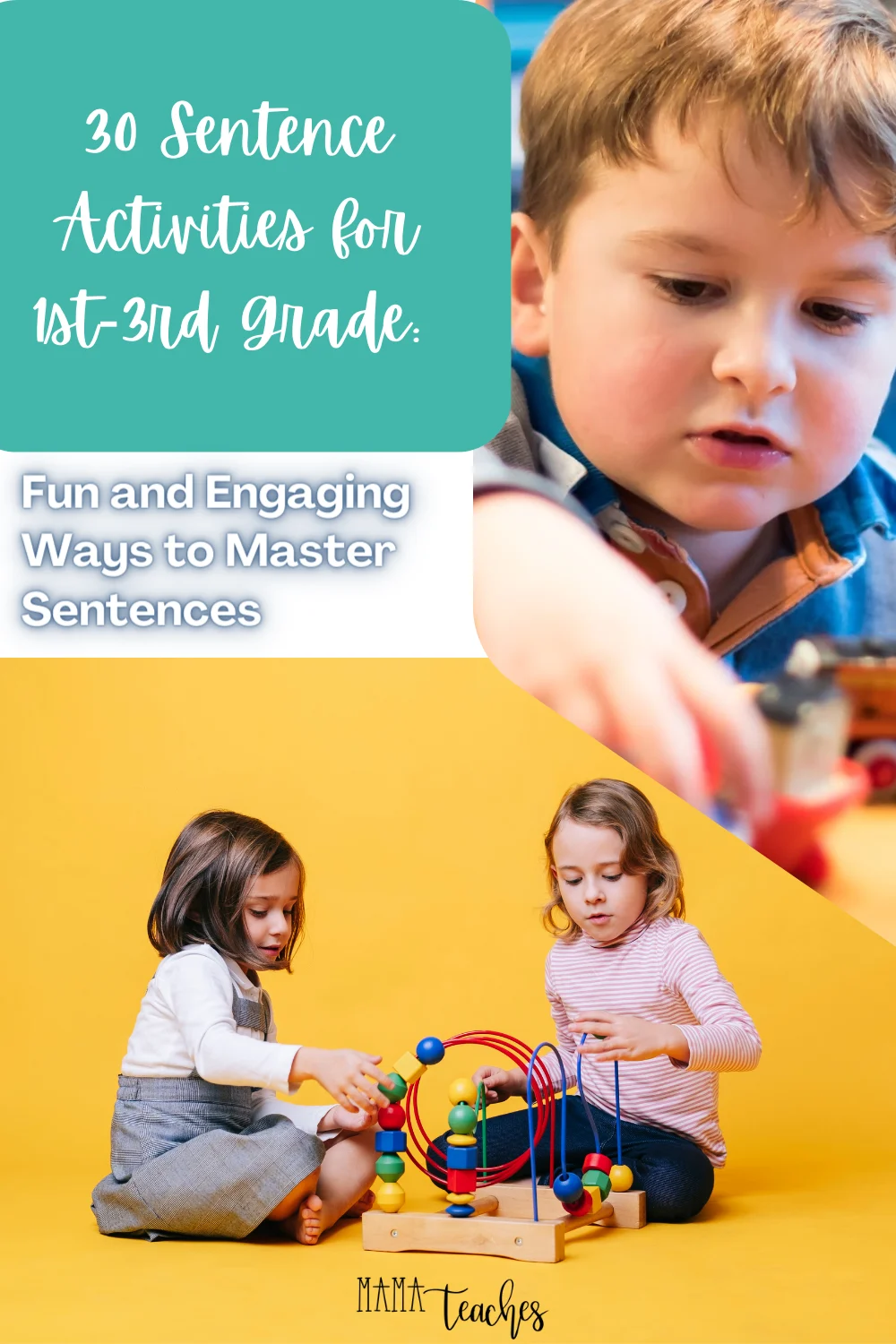
Second Grade Sentence Activities
- Write a sentence using each of the spelling words for the week.
- Create sentences using compound words or contractions.
- Write sentences using different verb tenses (past, present, future).
- Practice writing sentences with proper capitalization and punctuation.
- Write sentences with multiple adjectives to describe nouns.
- Create sentences that include prepositional phrases.
- Write sentences using synonyms or antonyms for given words.
- Make sentences with homophones or homonyms.
- Write descriptive sentences about characters from a book or story.
- Create sentences using conjunctions (e.g., and, but, or).
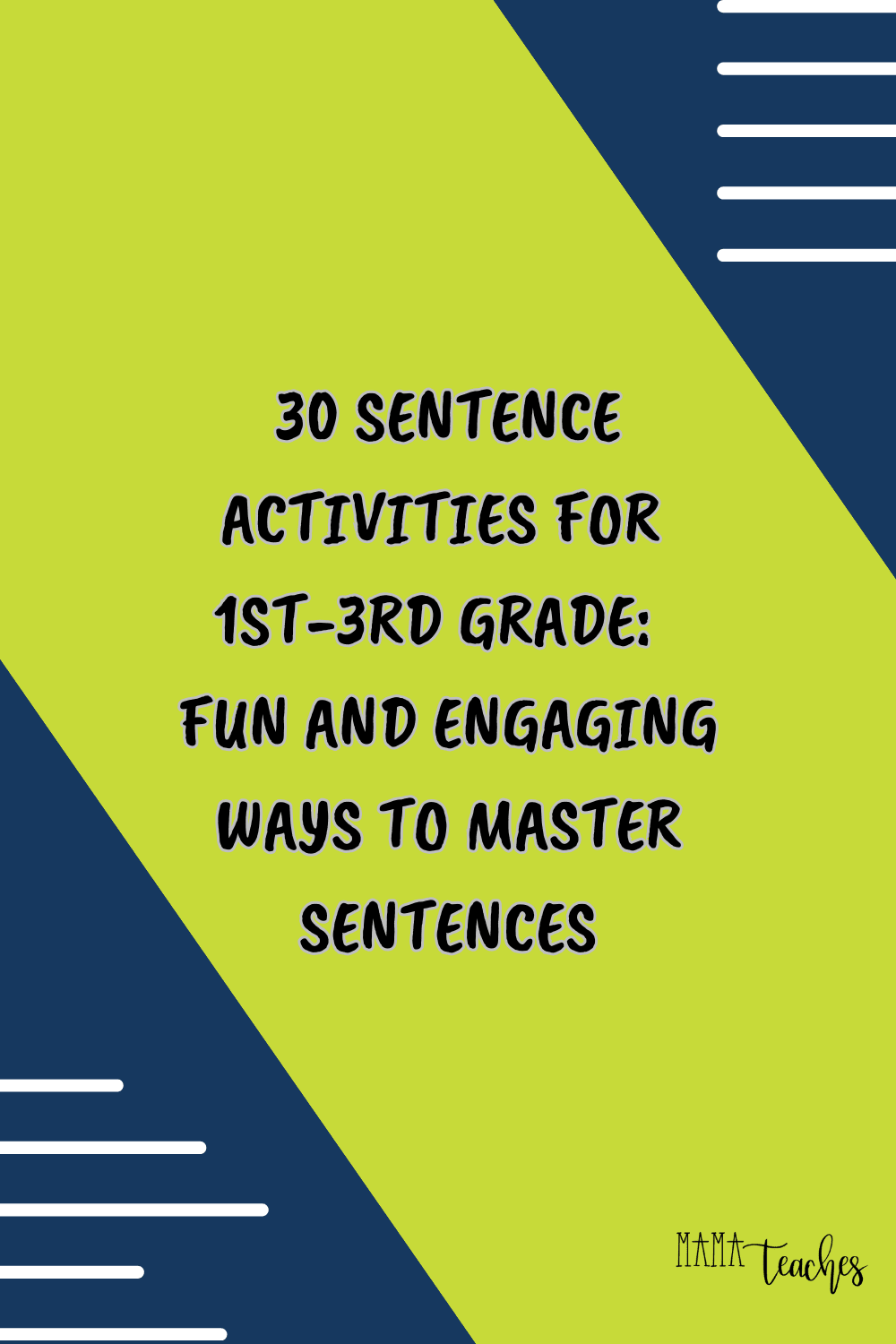
Sentence Activities in Third Grade
What Students in 3rd Grade Should Know About Sentences
In third grade, students continue to build on their understanding of sentences and develop more advanced skills.
In third grade, students should be familiar with important aspects of sentences and how they relate to what they need to know in the Common Core State Standards (CCSS).
Please note: The activities you choose for your students can align with specific CCSS, depending on the content and objectives, and they may not be the same standards as listed below.
- Sentence Structure: Students should have a strong grasp of sentence structure, including the subject, predicate, and appropriate use of capitalization and punctuation. (CCSS.ELA-LITERACY.L.3.1.I)
- Types of Sentences: Students should be able to identify and write declarative, interrogative, imperative, and exclamatory sentences accurately. (CCSS.ELA-LITERACY.L.3.1.I)
- Compound Sentences: Students should learn to create compound sentences by joining two independent clauses with conjunctions (e.g., and, but, or) and using appropriate punctuation (comma before the conjunction). (CCSS.ELA-LITERACY.L.3.1.I)
- Complex Sentences: Students should be introduced to complex sentences, which include an independent clause and one or more dependent clauses, and understand how to use subordinating conjunctions (e.g., because, although) to create them. (CCSS.ELA-LITERACY.L.3.1.I)
- Subject-Verb Agreement: Students should demonstrate a good understanding of subject-verb agreement, ensuring that verbs agree with their subjects in terms of number (singular or plural). (CCSS.ELA-LITERACY.L.3.1.F)
- Modifiers: Students should learn to use adjectives and adverbs effectively to provide more detail and enhance their writing. (CCSS.ELA-LITERACY.L.3.1.G)
- Punctuation Rules: Students should reinforce their knowledge of punctuation marks, including commas, quotation marks, and apostrophes, and use appropriate punctuation within complex and compound sentences. (CCSS.ELA-LITERACY.L.3.2.C and CCSS.ELA-LITERACY.L.3.2.B)
- Varied Sentence Structures: Students should practice using a variety of sentence structures (simple, compound, complex) to make their writing more engaging and varied. (CCSS.ELA-LITERACY.L.3.1.I)
- Sentence Combining: Students should develop skills in combining shorter sentences into longer, more complex sentences without changing the meaning. (CCSS.ELA-LITERACY.L.3.1.I)
- Sentence Analysis: Students should be able to analyze and identify the different parts of a sentence (subject, predicate, modifiers) as well as different types of phrases (prepositional, verbal, etc.) within sentences. (CCSS.ELA-LITERACY.L.3.1.I)
Every student is different, so it’s important to give them the right help and instruction based on what they need and how well they can do it.
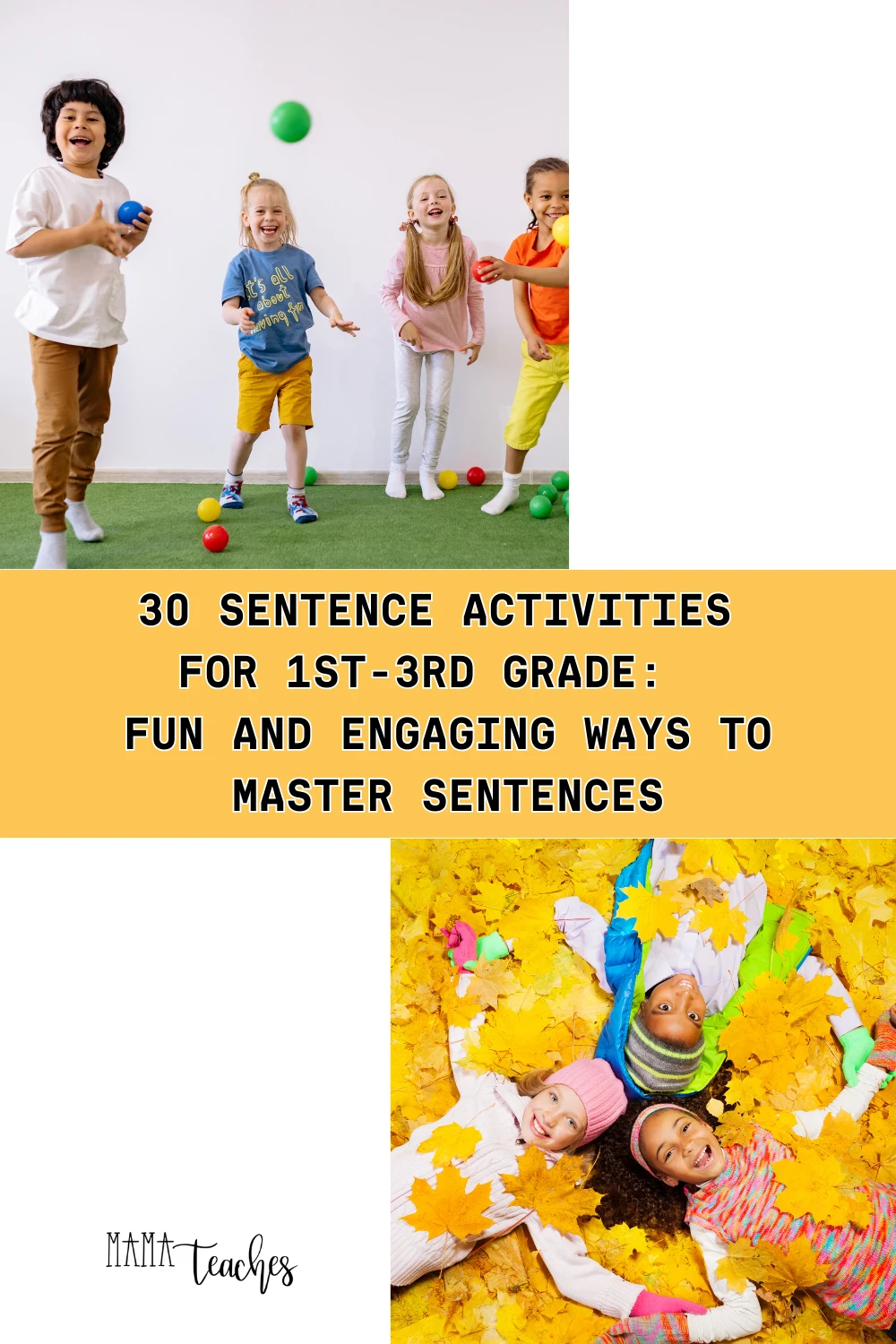
Third Grade Sentence Activities
- Write sentences using vocabulary words from different subject areas (science, math, social studies).
- Practice writing complex sentences with conjunctions such as because, although, and when.
- Create sentences using figurative language like similes or metaphors.
- Write descriptive sentences using strong adjectives and vivid language.
- Develop sentences that include introductory phrases or clauses.
- Create sentences with direct and indirect speech.
- Write sentences with multiple clauses, including independent and dependent clauses.
- Practice writing sentences with proper subject-verb agreement.
- Make sentences using comparative and superlative forms of adjectives and adverbs.
- Write persuasive sentences to express opinions or convince others.
Remember to adapt these activities based on the specific skills and abilities of individual students within each grade level.
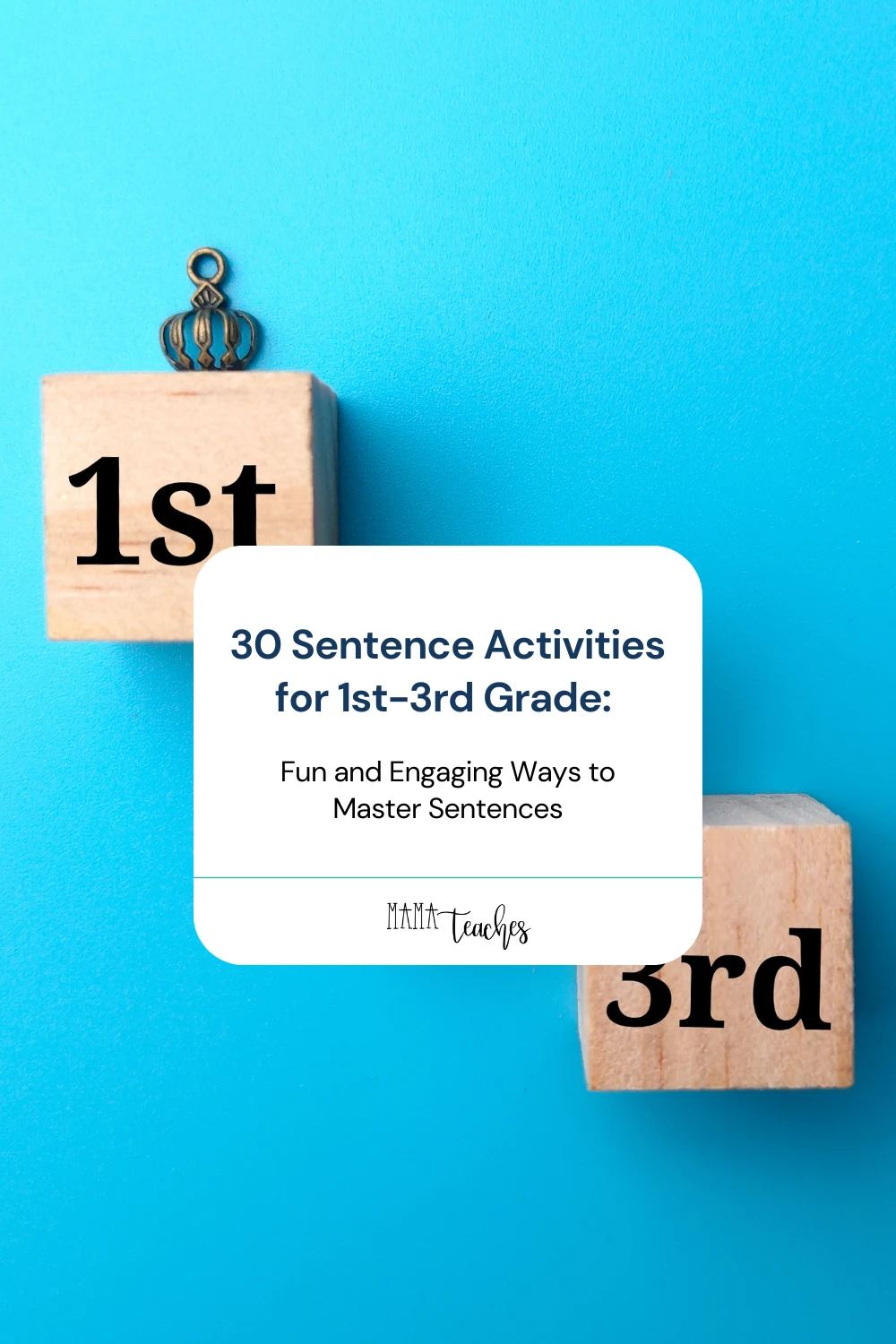
Fun Sentence Activities for All Grades
Sentence Scavenger Hunt
Have students search for specific types of sentences (declarative, interrogative, etc.) in books or texts.
Silly Sentence Challenge
Challenge students to create the silliest sentence possible using a given set of words.
Story Starters
Provide sentence prompts to spark creative story writing.
Sentence Sort
Ask students to sort a set of sentence cards into different categories (e.g., types of sentences, sentence structures).
Sentence Relay Race
Divide the class into teams and have them race to write complete sentences relay-style.
Mad Libs
Fill in the missing words in a story template to create funny and unique sentences.
Sentence Puzzles
Create sentence puzzles by cutting sentences into phrases or words and challenging students to reconstruct them correctly.
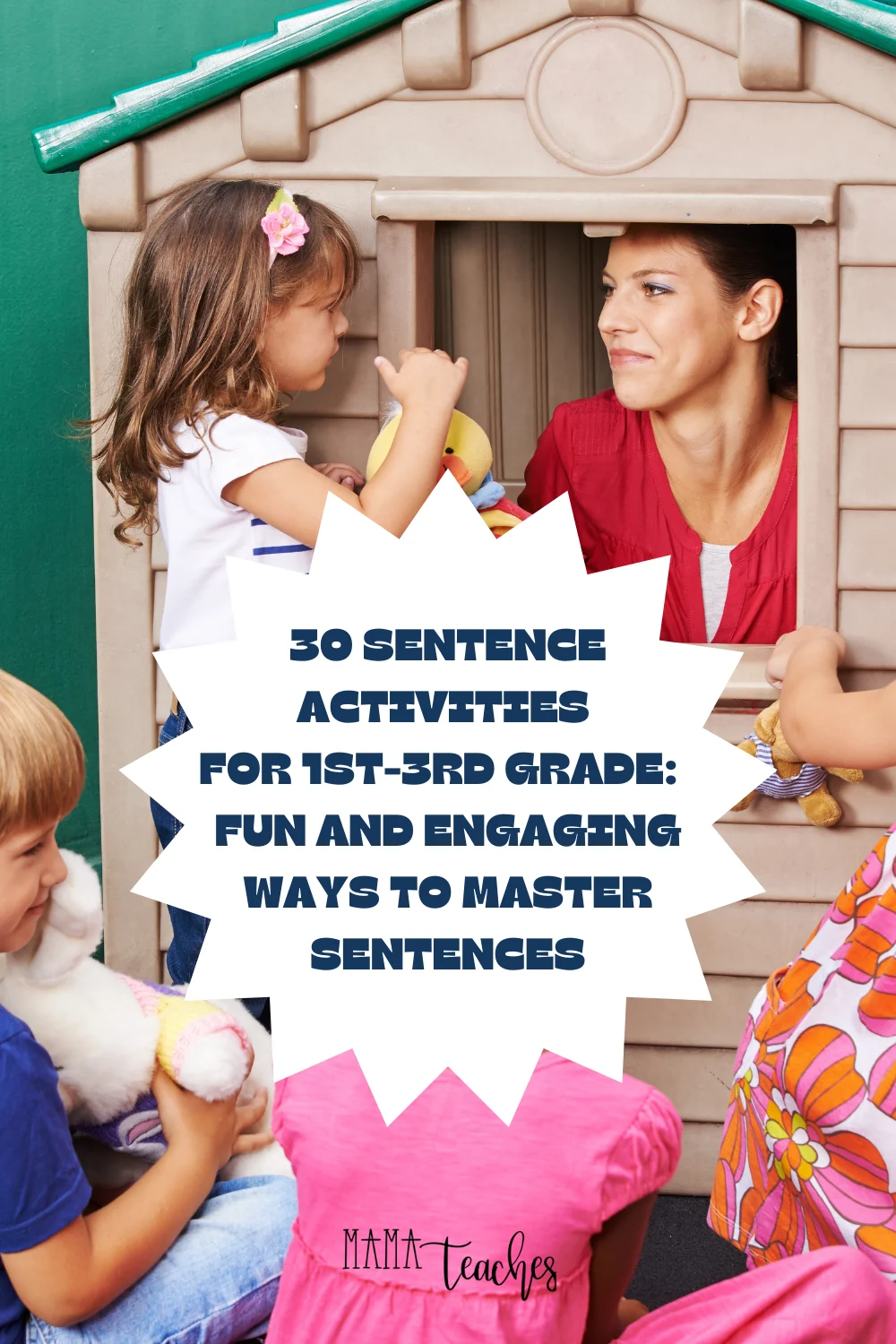
Sentence Charades
Act out sentences silently while classmates try to guess what the sentence is.
Sentence Sculptures
Use modeling clay or playdough to sculpt objects that represent specific sentences.
Sentence Bingo
Create bingo cards with different types of sentences, and students mark off the corresponding sentence type as they hear or read them.
Sentence Memory Game
Create a memory game by writing different sentence beginnings and endings on cards, and students need to match them up.
Sentence Detectives
Give students a passage and have them identify different sentence types or structures within the text.
Sentence Relay Drawing
In relay teams, students take turns writing one word at a time to create a complete sentence and then draw a picture based on it.
Sentence Trading Cards
Have students create trading cards with interesting sentences they have written and trade them with classmates.
Sentence Speed Challenge
Time students as they write as many complete sentences as possible in a given time frame.
Sentence Jigsaw
Cut sentences into strips and have students work together to arrange them in the correct order.
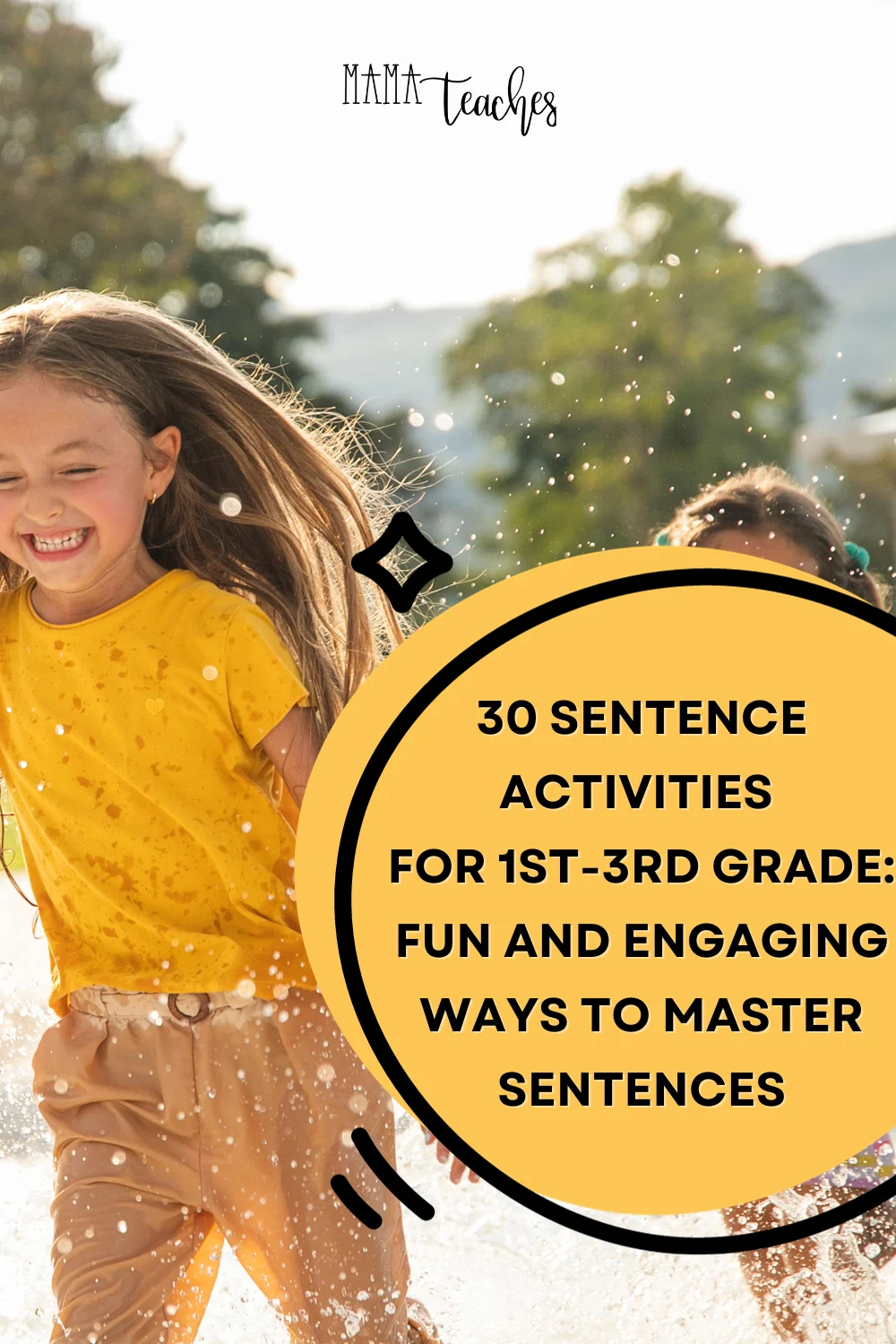
Sentence Dominoes
Create domino cards with sentence beginnings and endings, and have students match them up to create complete sentences.
Sentence Theater
Act out sentences as short skits or mini plays, bringing the sentences to life.
Sentence Hopscotch
Write different parts of a sentence in chalk squares, and have students jump on the squares in the correct order to form complete sentences.
Sentence Relay Dictation
In relay teams, one student dictates a sentence to their teammate, who writes it down and then passes it on to the next teammate to continue the relay.
Sentence Spinners
Create sentence spinners using paper clips and pencils, and have students spin them to determine the subject, verb, or other elements of a sentence.
Sentence Mosaics
Use small colored squares of paper or materials to create visual representations of sentences.
Sentence Building Blocks
Provide students with blocks labeled with different words, and have them build sentences from the blocks.
Sentence Balloon Pop
Write different parts of a sentence on slips of paper and insert them into balloons. Students pop the balloons and use the words inside to construct complete sentences.

Sentence Relay Board Game
Design a board game where students move through spaces by creating correct sentences based on given prompts.
Sentence Origami
Fold paper into origami shapes and write different parts of a sentence on each fold, then unfold and read aloud the complete sentence.
Sentence Tic-Tac-Toe
Play tic-tac-toe with a twist by having students form complete sentences using given words instead of Xs and Os.
Sentence Obstacle Course
Set up an obstacle course with stations where students must write or say complete sentences before moving on to the next challenge.
Sentence Spinner Art
Create spinners with different types of sentences and colors, then use them to determine the content and style of a sentence-based art project.
Sentence Relay Whiteboard Challenge
In relay teams, students take turns running up to the whiteboard to write one word each, collaborating to create a complete sentence.
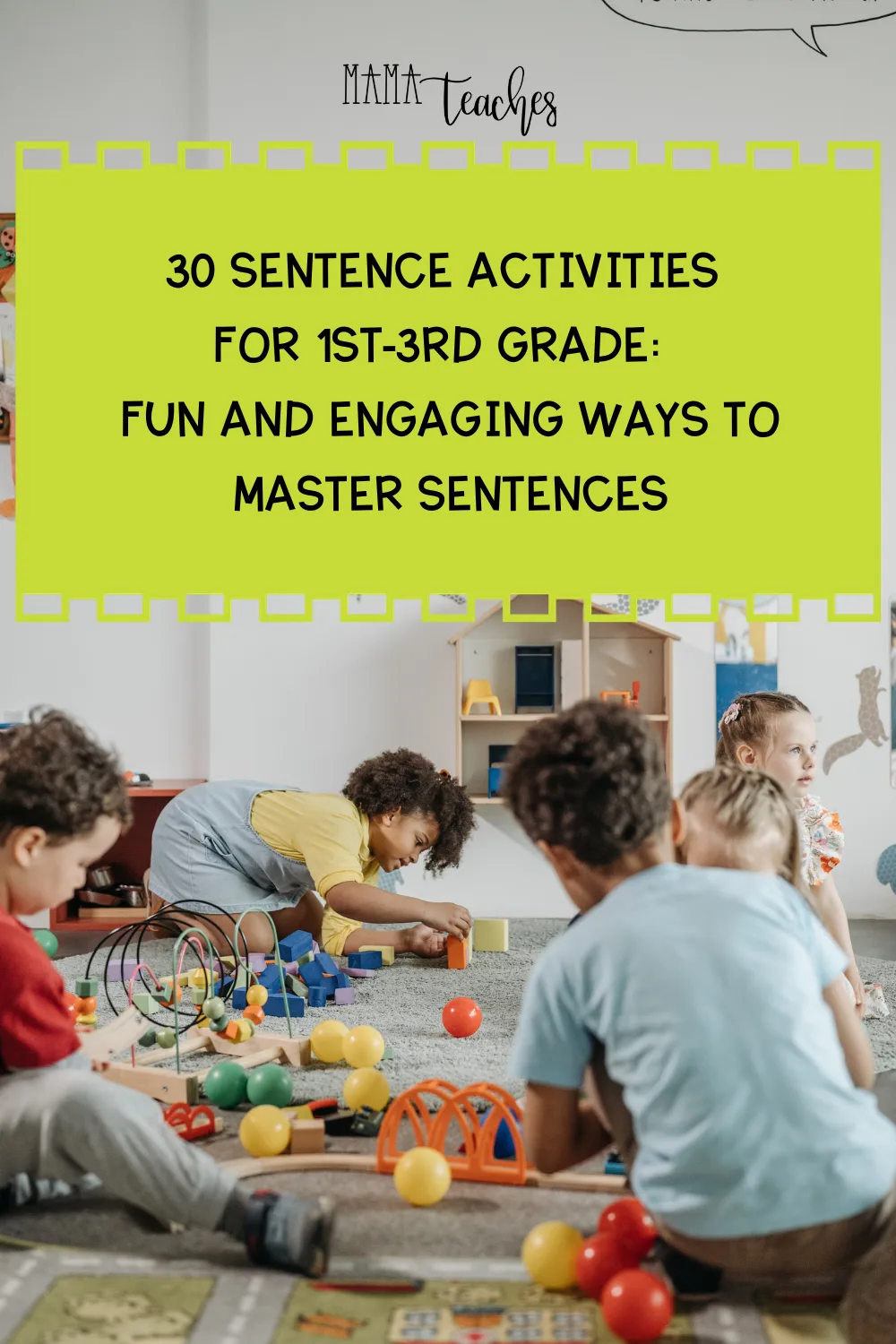
Engaging Sentence Activities for 1st-3rd Grades
incorporating engaging sentence activities into the curriculum for 1st to 3rd-grade students can greatly enhance their understanding and mastery of sentences.
By providing a solid foundation in sentence structure, capitalization, punctuation, and different types of sentences, these activities not only promote language development but also foster creativity, critical thinking, and effective communication skills.
From writing sentences using sight words to creating complex sentences with conjunctions, students are empowered to express their thoughts and ideas with clarity and confidence.
By making sentence learning fun and interactive through activities like sentence scavenger hunts, sentence charades, or sentence relay races, educators can create an enjoyable learning environment that encourages active participation and long-lasting knowledge retention.
By implementing these diverse and stimulating sentence activities, teachers can ensure that their students are well-equipped with the necessary skills to become proficient writers and effective communicators in the future.
